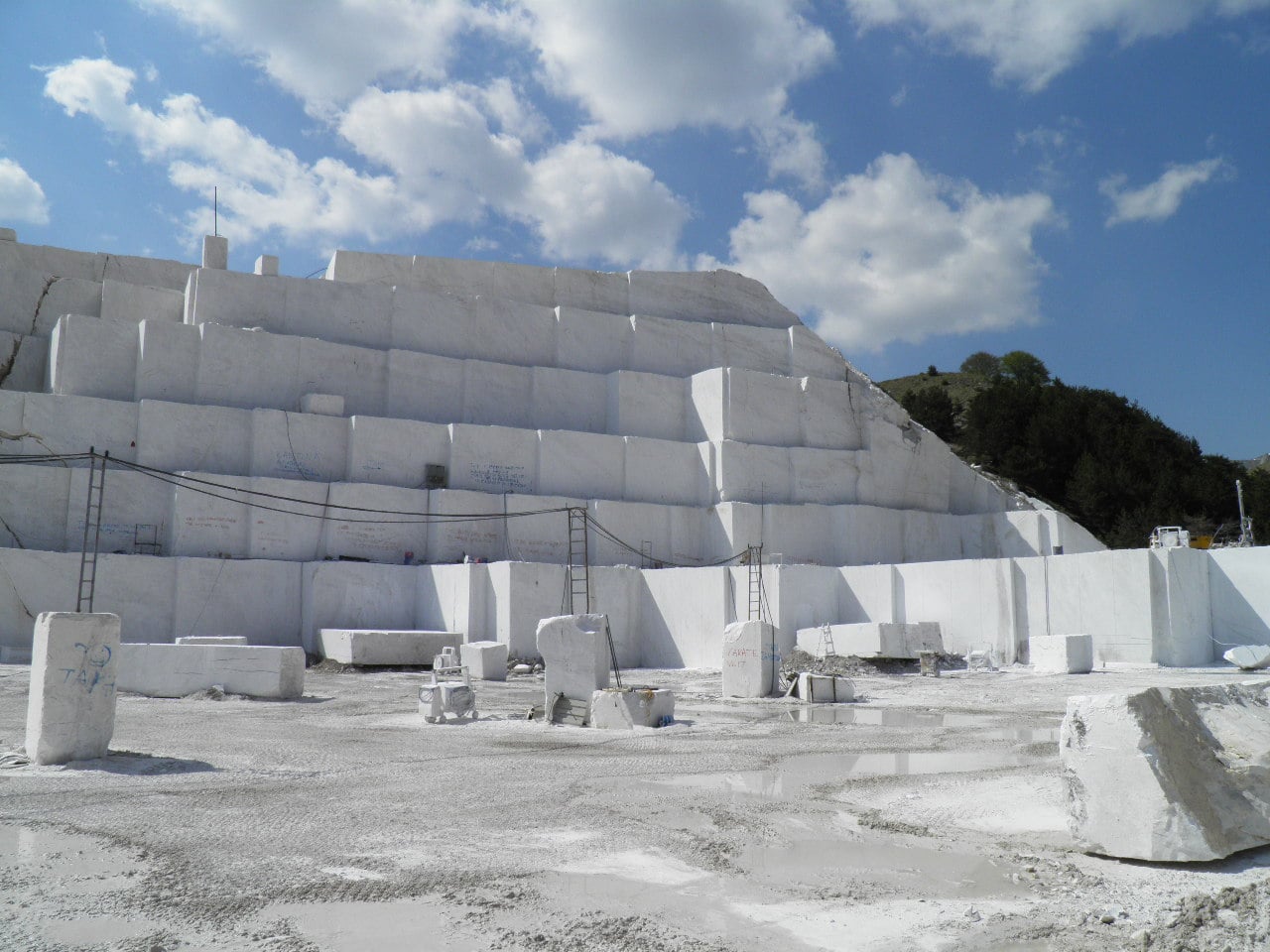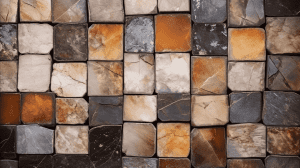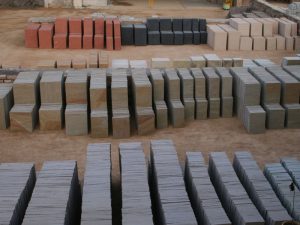In the realm of stone block extraction, particularly for SangVarehStone Company, the stone extraction process typically involves extracting stones from shallow quarry deposits, primarily in the form of large stone blocks. These blocks are carefully selected to meet a specific set of criteria in current standards regarding physical and technical characteristics, dimensions, solidity, and shape. Depending on the extraction method and the precision of block geometry, blocks are categorized into “sawn” and “chipped.” In this article, we go through the stages of stone block extraction
Various Aspects of Extracting Stone Blocks
A unique aspect of extracting facing stone is the imperative to preserve the natural stone throughout the extraction process. Rock cutting is achieved through a variety of methods and machinery, including stone cutting machines with cutting discs or ri
drilling mills, rope saws, and cutters. The selection of tools depends on the hardness of the rock. for instance, softer and medium-hard rocks, such as marble and limestones, typically are cut using stone cutting machines. Hard rocks, on the other hand, may require explosion-based extraction using drilling and blasting techniques.
Heat-based methods, such as the thermal jet method, come into play when dealing with rocks containing quartz due to their susceptibility to high-temperature stress conditions. This technique involves cutting blocks directly from the rock mass using thermo-cutters that emit high-temperature gas jets at supersonic speeds. Before shipment to consumers, blocks can undergo technical processes to achieve the desired size and shape, typically close to rectangular.
The suitability of a stone unit is determined by a complex set of decorative, physical-mechanical, and technological properties, as well as its durability. Factors that determine stone quality include fractures, weathering, non-polished areas, and, for limestones, a high moisture content. The physical and mechanical properties of rocks are regularly assessed in alignment with changes in their characteristics. Stone blocks must be produced from rocks that have specific properties and surface quality.
Modern stone-working facilities are equipped to produce a wide array of products from raw stone materials such as facing slabs to architectural and construction elements, decorative plates, and more, all based on natural stones.
When it comes to the processing of stone, it encompasses a series of technological operations that shape the stone, determine its dimensions, and create a desired surface texture. The process involves approximate shaping, precise sizing, and textured finishing, depending on the intended product.
In the workshops of contemporary stone-working enterprises, specialization exists for hard, medium-hard, and soft natural stone. The processes for preparing and cutting stone blocks are shared across the processing of natural stones with varying hardness. Edging and grinding, however, follow distinct sequences for stones of different hardness.
Given that the majority of the volume in facing materials and natural stone products consists of slabs, most stone-working enterprises adhere to a common processing scheme centered around sawing processes.
Various textures are achieved during the surface processing of stone through shearing, such as the natural “rock” type, characterized by a stone’s natural break that forms knolls and depressions on the surface without the marks of machining tools. This method is typically applied to granite, syenite, diorite, labradorite, quartzite, gabbro, sandstone, basalt, and limestone.
Block Categorization, Extraction Methods, and Block Cutting
The primary focus of this passage centers on the categorization of stone blocks, the methods used for their extraction, and the subsequent cutting processes. Before natural stone finds its place as a stunning kitchen countertop or the elegant flooring of a shopping mall, it must be meticulously extracted from the Earth, where it has rested for hundreds of millions of years. Given the diverse array of stone types and quarry formations across the globe, it’s no surprise that the techniques for extracting stone can vary significantly. Below, we delve into specific quarry extraction procedures, encompassing the machinery employed alongside handling equipment, extraction methodologies, and the overall production of stone blocks.
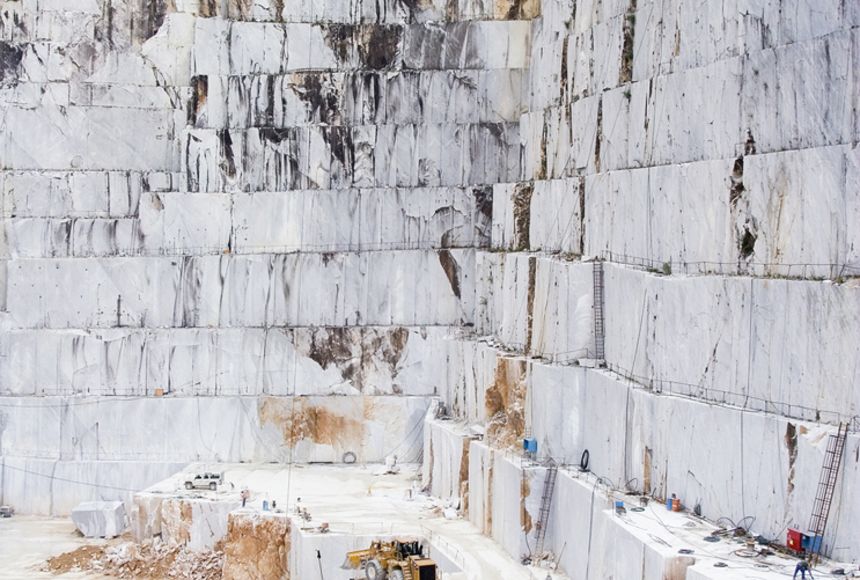
Extraction of Marble from the Quarry and Formation of Marble Blocks
The initial stage in crafting marble for construction purposes involves the extraction of stone from the quarry. This task is typically carried out using chainsaws or more advanced machinery. Upon extraction from the heart of the mountains, what we obtain are raw stones, which are then cut into pieces of varying dimensions. These pieces, often referred to as “coupe stones,” progress to the subsequent processing stage within the factory.
Coupe stones or blocks are categorized into three primary groups based on their quality and dimensions:
First Category
The “single-compartment” category represents the highest quality raw stone. These stones are loaded individually, each forming a rectangular cube weighing approximately 25 tons, and they are transported in separate trailers. This category earns its name due to the one-block-per-trailer arrangement.
Second Category
In the “second category,” two coupes of raw stone, each of smaller dimensions, are paired together and loaded onto a single trailer. This configuration results in a lower cost compared to the single-compartment category.
Third Category
The “third category” encompasses three coupes and carcasses, referring to rocks loaded in sets of three. The term “carcass” denotes a boulder with dimensions slightly smaller than the other two.
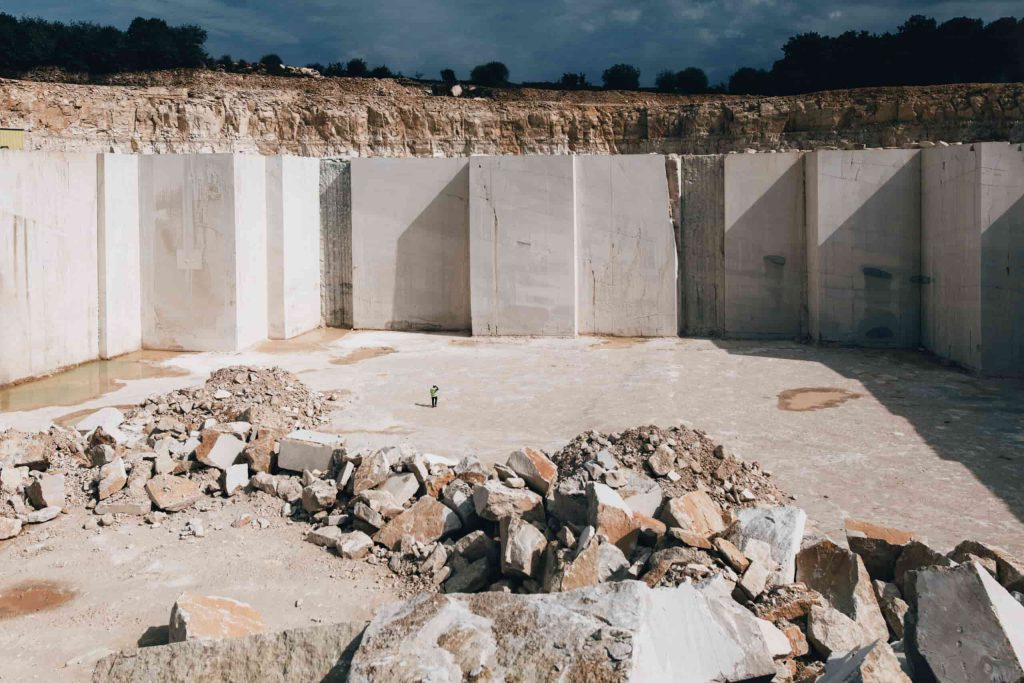
Final Words
In the world of natural stone, SangvarehStone Company is dedicated to the art and science of extracting blocks. We recognize that before it graces the grandeur of architectural marvels or adorns elegant spaces, natural stone must be coaxed from the Earth’s embrace, where it has rested for eons. As guardians of this timeless treasure, we employ a rich tapestry of extraction methods, marrying tradition with innovation. Our commitment to excellence ensures that each block extracted, whether it’s destined to become a majestic slab or an intricate sculpture, meets the highest standards of quality and precision. We understand that the Earth’s bounty is unique, and it’s our privilege to preserve its natural beauty and integrity in every block we extract. Join us on this journey, where the artistry of nature meets the craftsmanship of SangVarehStone, creating enduring legacies etched in stone.
FAQ
- What is the process for extracting stone blocks from a quarry?
The extraction of stone blocks from a quarry involves initiating the process by drilling intersecting holes into the quarry walls. Diamond-tipped wires are then inserted into these holes to create a continuous loop. A motor rotates these wires until the desired stone block is cut.
2. What techniques are employed for stone extraction?
Stone extraction methods encompass various approaches, including:
Quarrying without blasting, which includes the Wedge Method and the Channeling Method, as well as quarrying by heating.
Quarrying with blasting involves drilling blast holes, charging them, and then firing the shot.
3. Is it challenging to cut natural stone?
Cutting natural stone tiles can be more challenging compared to ceramic or porcelain tiles due to their hardness. Conventional tile-cutting tools like tile cutters or tile snips may not be suitable, as they require substantial pressure to snap natural stone tiles.
5. What is the stone extraction process in a quarry?
Extracting stone from a quarry involves drilling and blasting to break the rock into smaller fragments. Multiple charges are detonated simultaneously, resulting in the fragmentation of up to 20,000 tons of stone in one blast. These broken stone pieces are then crushed and sorted into uniform classes through screening.
